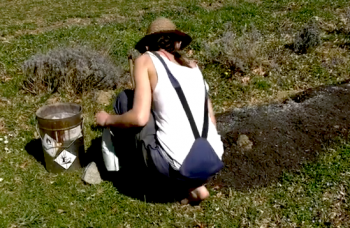Helping the housing sector to embrace the circular economy: a summary of our policy recommendations

Our partner Housing Europe has developed a set of 70 recommendations for mainstreaming and upscaling HOUSEFUL-type circular renovation solutions in the European building sector.
The Houseful Project ends in three months’ time.
Sometimes this project has been not smooth sailing. Many challenges have been encountered and some of the original plans have had to be modified or effectively abandoned. Rather than being a disappointment, such issues are an important part of turning EU-funded projects into exercises in identifying current barriers and obstacles to innovation.
Indeed, one of the major outputs of our project is a detailed set of policy recommendations for mainstreaming and upscaling HOUSEFUL-type circular renovation solutions. This report contains over 70 recommendations in a number of areas:
- Laws and regulations
- Dealing with civil servants and public officials
- Supply of materials, procurement, and implementation with external partners
- Residents and end-users
- Dealing with supporters of innovation projects
- Reinforced policy changes for upscaling of circular solutions
In order to develop these recommendations, Housing Europe collected the experiences of all partners within HOUSEFUL. This feedback was then “sense-checked” with independent experts from outside the project, to see if similar issues were arising in other circular projects. With HOUSEFUL demos in only two of the EU’s 27 Member States, efforts were also made to bring in a broader set of experiences from other countries, and also to look at the EU dimension of measures that can either constrain or support the circular transition.
The main target of these recommendations is the policymakers, but there are a few measures that stand out, and which warrant special attention. This is either because of their potential impact or because of the frequency with which they were mentioned by those who were consulted during the development of the recommendations.
These recommendations are primarily intended for policymakers and include a few measures that warrant special attention from other audiences. This is because of their potential impact or how often they had been mentioned by respondents when we were developing them.
The need for additional lighthouse circular projects
One clear issue from the discussions was that there is a significant information gap along the full value chain of renovation projects when it comes to many aspects of the circular economy. This includes local public officials, architects, construction companies, and end-users (i.e., tenants and residents).
One very tangible impact of this regards the issuing of tenders by building owners. Given that many circular solutions remain either quite niche or unknown by construction companies, it is difficult for them to properly understand the costs of installation and the potential for cost overruns. Therefore, the perceived “risk” of tendering for such contracts can be high. As a result, there are few tenders, which is bad for competition and can be reflected in the final cost for building owners. However, local lighthouse projects can help to demystify these logistical issues and therefore drive local competition. Clear and ambitious goals for the development of local circular pilots, therefore, need to be set.
Necessary skills
While some circular solutions do not require a significant shift in the work practices of experts, such as architects, engineers, and construction workers, to implement, others require specific knowledge and expertise that is currently very far from the mainstream. For example, the installation and maintenance of blackwater treatment facilities. In the absence of such local knowledge, certain solutions could be non-viable, unnecessarily expensive, or cumbersome. Therefore, special efforts need to be made so that new workers entering the broad field of “construction” and its associated fields, like architecture, receive adequate training on circular solutions. For existing workers, re-skilling and training opportunities are necessary.
Facilitating the reuse of building materials, including through materials passports
According to the EU, “The built environment has a significant impact on many sectors of the economy, on local jobs and quality of life. It requires vast amounts of resources and accounts for about 50% of all extracted material. The construction sector is responsible for over 35% of the EU’s total waste generation. Greenhouse gas emissions from material extraction, manufacturing of construction products, construction and renovation of buildings are estimated at 5-12% of total national GHG emissions. Greater material efficiency could save 80% of those emissions”.(Source: European Commission, New Circular Action Plan)
However, the market for reused building materials is currently not well developed. This reflects numerous issues. For example, awareness of the possibilities to recover and reuse certain materials is not always high in the Member States. Reusing materials is not necessarily more cost-effective than simply purchasing new construction products, owing to the need to pay for costly ‘Declarations of Performance’ and the fact that things like energy or thermal efficiency, and durability of such products might be lower. There are also doubts about the potential implications of the cost of building insurance. As long as such obstacles exist, a dynamic and well-stocked secondary materials market seems hard to develop.
One way in which things can be improved, though, might be through the mainstreaming of material passports for buildings. Material passports are digital tools for creating a catalog of all of the materials contained within a product, or in the case of HOUSEFUL, a building. Thus, every brick, board, and pain of glass is cataloged in order to evaluate it and to facilitate the future recovery of materials as they reach the end of their life in their current building. Material passports also help to assess the residual value of a product, facilitating its resale on the secondary market. Thus, material passports are essential in avoiding both the wastage of existing materials, as well as the need for the extraction and processing of additional ‘virgin’ materials.
Conclusions
Overall then, there are many remaining obstacles to mainstreaming the types of circular solutions used in HOUSEFUL. However, the experience gained from the project, and others like it, can play an important role in removing these obstacles, by shining a spotlight on them and helping to effect change and awareness amongst policymakers and those involved in the construction value chain.
The full publication containing a suite of over 70 policy recommendations will be available on the HOUSEFUL website in the coming weeks.
(Article written by Dara Turnbull, a Research Coordinator at Housing Europe).
Foto di Anne Nygård su Unsplash



